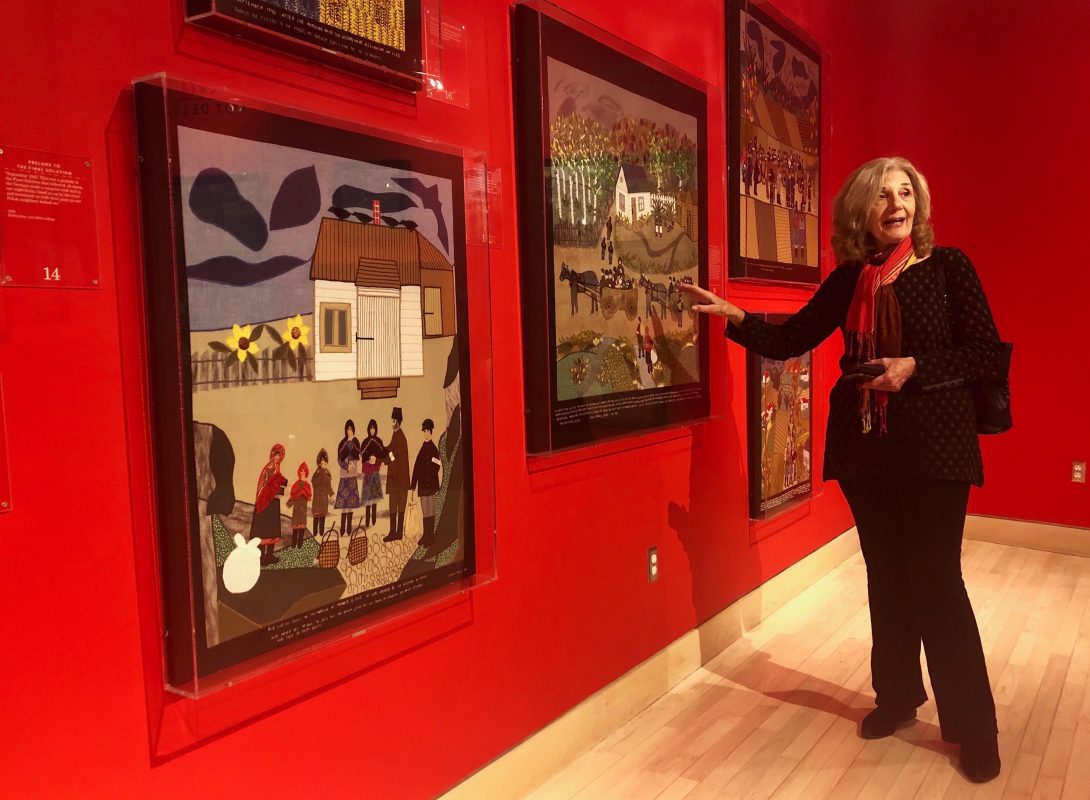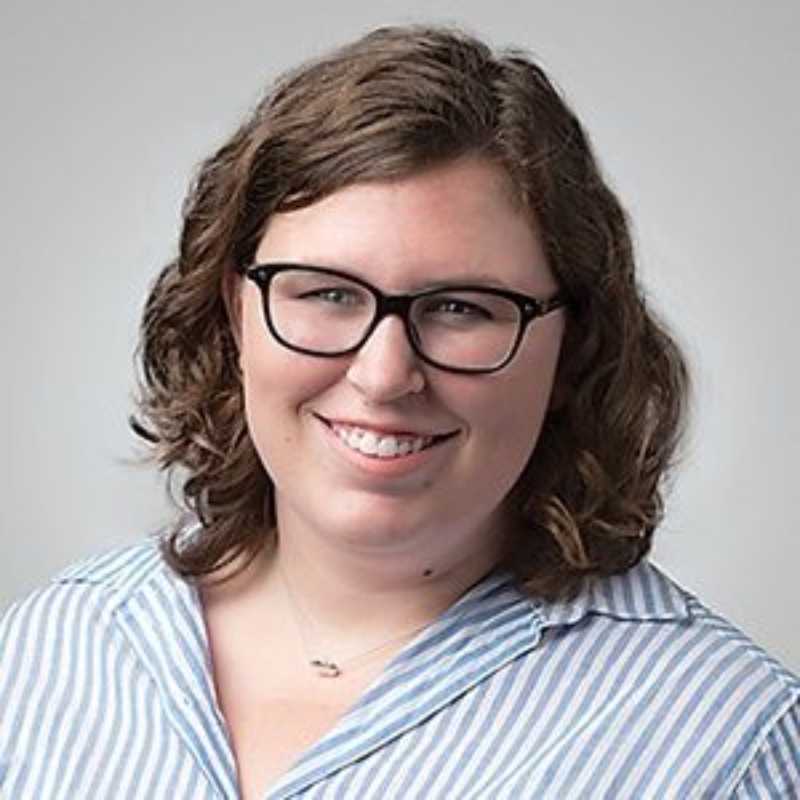
When Esther Nisenthal Krinitz left behind war-torn Poland in the summer of 1949, she had nothing left of the family she’d lost. Her parents, brother, and young sisters, along with the other Jewish families in her rural village, were told to report to a train station and never heard from again.
But Krinitz, 15 at the time, and her 13-year-old sister Maria managed to survive by posing at Polish farm girls and finding work in a nearby village where no one asked to see their papers. They had many memories—of Jewish holidays spent with family, quiet life among their crops and livestock, and playing together as a family —but nothing solid to pass along to tie future generations to their lost past.
According to Krinitz’s daughter, Bernice Steinhardt, her mother was always telling her story. But in 1977, when Krinitz was 50, she started showing it instead. The result is 36 embroidered pieces that are now the highlight of the American Visionary Art Museum’s latest exhibition, Esther and The Dream of One Loving Human Family. Krinitiz’s work depicts her childhood, escape from the Nazis, life in hiding, and journey to America, culminating in her final piece: a portrait of her first granddaughter. It’s also accompanied by a documentary about her life and a recreation of her home in Poland.
“What my mother was doing here was for the family,” says Steinhardt. “It was about the family she lost and for the family that she created. The fact that she was a grandmother, that was what my mother was all about. It was not about expressing herself artistically, although of course she did, it was about remembering her family for her family.”
The pieces are placed in conversation with works from international artists that demonstrate the danger of demonizing the “other,” with the goal of educating visitors on just how devastating the escalation of hatred can be. A “preamble” to Krinitz’s embroideries includes sewn works documenting the genocide of the Tutsi people in Rwanda and life under apartheid in South Africa, as well as painted, carved, and assembled works from Native American activist and artist Judy Tallwing.
“When you take away names or identifiers like Jewish, or Holocaust, or any ethnic group, religion, or color and you look at what the mechanisms of the campaign to permit a genocide or mass slaughter that is orchestrated with a purpose in mind were, it’s all one playbook,” says AVAM founder and director Rebecca Hoffberger.
Together, these art pieces from across the world share the perspective of the innocents whose lives are altered by hatred and warn of its dangers. Words, in the form of essays and quotes around the gallery, play just as big a role in the message, sharing wisdom and forgotten history relating to the need for peace and “one loving human family.”
Just days into its run, people have already traveled from as far as Ohio and New York for a chance to see this expanded collection of Krinitz’s intricate, emotional works, which originally premiered at AVAM in 2001. But there’s plenty of time to catch them in this new installation, which will stay on display through March 2024.
